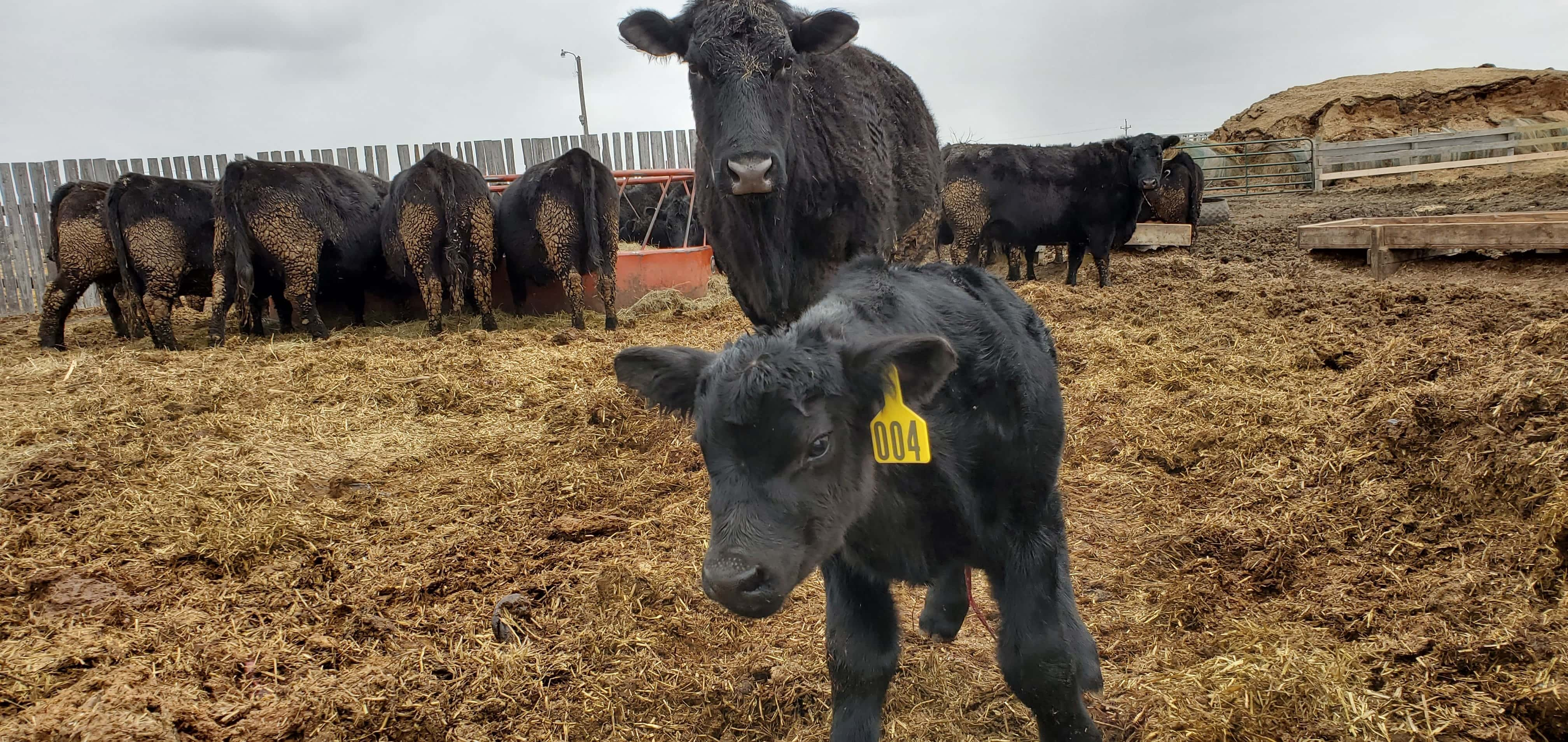
Image and content provided by NDSU Extension
Field peas may be an alternative to distillers grains as a protein source in cattle feed if the field peas are at a low enough cost, according to a North Dakota State University Extension livestock systems specialist.
Distillers grains are a coproduct of producing ethanol from corn.
“Distillers grains are a very palatable feed that usually has a feed test of 30% crude protein dry-matter (DM) basis,” says Karl Hoppe, who is based at NDSU’s Carrington Research Extension Center. “Typically, dried distillers grains are priced at 110% to 120% of the price of corn grain per ton. When priced on cost per pound of crude protein, distillers grains traditionally have been a very low-cost protein source. Also, distillers grains have a high energy value, making them both a protein and an energy feed.”
However, ethanol plants have reduced production or closed temporarily, so the price of distillers grains has risen from $130 to $180 per ton, and modified dried distillers grains (50% moisture) have risen from $65 to $90 per ton.
“The higher moisture content of modified and wet distillers grains blends well into a total mixed ration and nicely conditions the feed,” Hoppe notes. “It’s a popular choice in cattle rations. But when price increases and/or availability is limited, cattle producers look for options.”
One such option is field peas. Pulse crops such as field peas are suited to cooler climates and not usually planted where corn is prevalent. However, North Dakota raises corn and field peas, and field peas are an excellent feed for cattle, Hoppe says.
Field peas are 25% to 27% crude protein and contain a high amount of starch. The energy content of field peas is similar to corn grain.
Field peas are very palatable once cattle become accustomed to the grain. Getting cattle accustomed to field peas usually takes three days if cattle have not had previous experience with field peas.
Field peas can be fed in amounts similar to corn. If producers want to include field peas in cattle diets at high rates, the amount of field peas should be increased slowly, similar to corn.
“If field peas are priced competitively with corn grain, field peas can be a replacement for corn energy,” Hoppe says.
Typically, field peas are priced for the human food or pet food markets. These prices are considerably higher than feed grain prices. However, recently the demand in the pet food market has been reduced and some field pea producers are looking for other markets.
If field pea prices are $5 per 60-pound bushel, that calculates to $167 per ton for a 25% to 27% (DM basis) crude protein feed.
“If dried distiller grains are $180 per ton for 30% (DM basis) crude protein, then field peas are a competitive protein source.” Hoppe says. “If freight needs to be added to distillers grains, then field peas are even more cost competitive if the field peas are already binned on-farm.”
Field peas are not a direct substitution for distiller grains, though. Distillers grains have been through a fermentation process to remove most of the starch and sugars. Field peas are high in starch, and including them in livestock diets at high rates may cause acidosis, a nutritional issue caused by cattle consuming too much starch.
“As with all grains, using ‘step up’ rations, or slowly increasing the grain concentration into the ration, will reduce acidosis issues,” Hoppe says.
Field peas have yellow and green seeds, and difference may exist in protein content. A feed analysis will determine crude protein concentration in the field peas.
“Field peas are a beneficial addition to a cattle ration,” Hoppe says. “Providing both protein and energy, field peas are a viable supplement for beef cow rations. With recent pricing and demand changes for feed, reconsider using field peas as a feed source for cattle.”
He notes that North Dakota also produces other protein sources that producers might consider feeding their cattle. Those protein sources are canola, sunflower and soybean meal. Whole soybeans can be used as a protein source when limited to less than 4 pounds in a cow diet. Wheat midds and alfalfa hay can be considered as protein sources as well.
